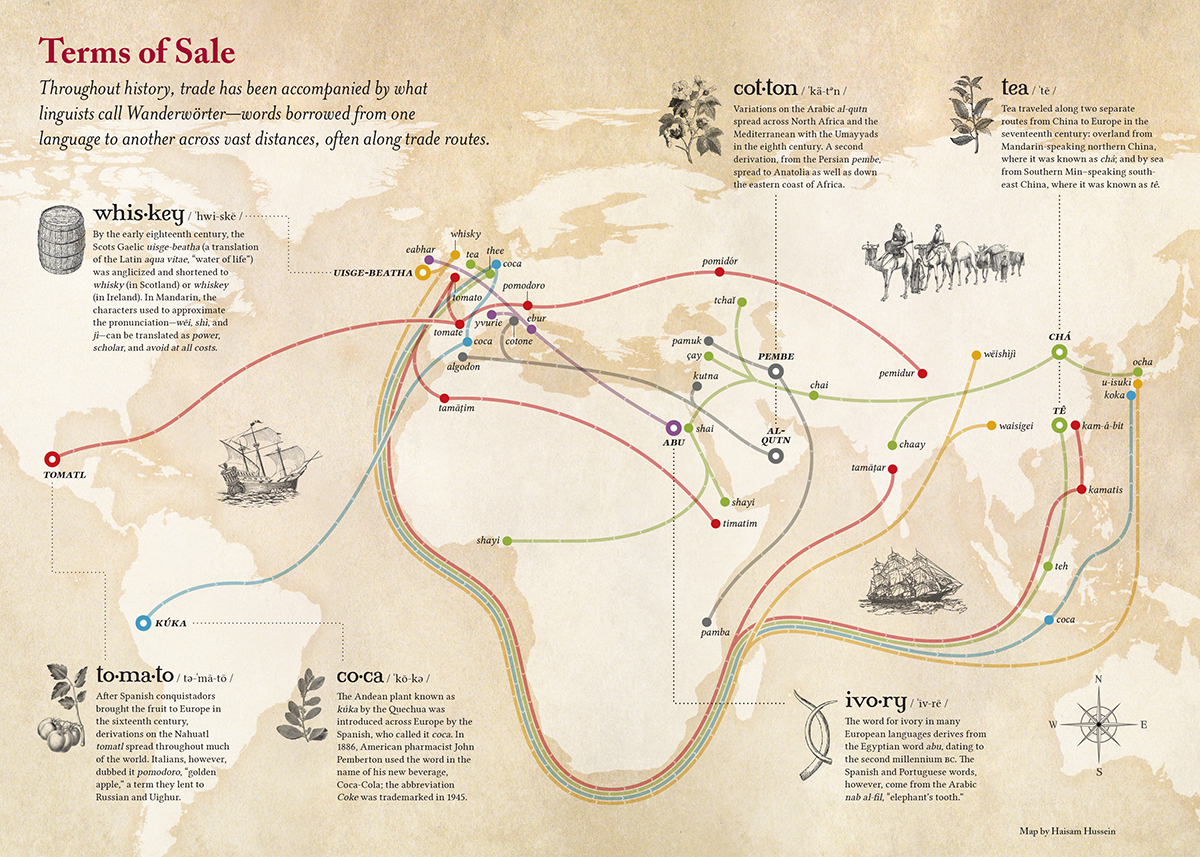In the early history of international trade, when exotic goods traveled to new regions, their native names sometimes hitchhiked along with them.
Q4 hedge fund letters, conference, scoops etc
 Naturally, the Germans have a term – Wanderwörter – for these extraordinary loanwords that journey around the globe, mutating subtly along the way.
Naturally, the Germans have a term – Wanderwörter – for these extraordinary loanwords that journey around the globe, mutating subtly along the way.
Today’s map, produced by Haisam Hussein for Lapham’s Quarterly, charts the flow of Wanderwörter along global trade routes.
Tea
China’s export dominance over tea influenced how people around the world refer to their steeped beverages.
The spread of tea along the Silk Road from Mandarin-speaking Northern China resulted in much of Asia and Africa having similar sounding words for tea. Chá evolved into the chai widely consumed in India and surrounding areas today.
Tea’s other major trade route, through Min-speaking Southern China, spread the pronunciation that became the standard around Europe. This is why we see such striking similarities between thé (French), thee (Dutch), tee (German), té (Spanish), and tè (Italian).
Tomatoes
Sometimes, a word’s journey isn’t completely linear.
In the case of tomatoes, the Italians’ decision to dub the red fruit pomodoro, or golden apple, led to a linguistic fork in the road. This is the reason the English name for tomatoes is still similar to the Aztec term tomatl, but in Russian, pomidor can be traced back to Italian.
Cotton
Many people in North America would be surprised to learn that “cotton” is a direct link to the Arabic word al-qutn.
Coca
When the Spanish brought coca from South America and spread it into the global market, its easy-to-pronounce name tagged along for the entire journey. Though its spelling may differ across cultures, say the word “coca” in many countries and people will likely know what you’re referring to.
A Small World After All
Most of us are vaguely aware that parts of our langauge consist of loanwords from other regions and cultures, but seeing the spread of language in map form is a powerful reminder that the globalization as we know it is a continuation of centuries of commercial and cultural exchange.
Article by Visual Capitalist
